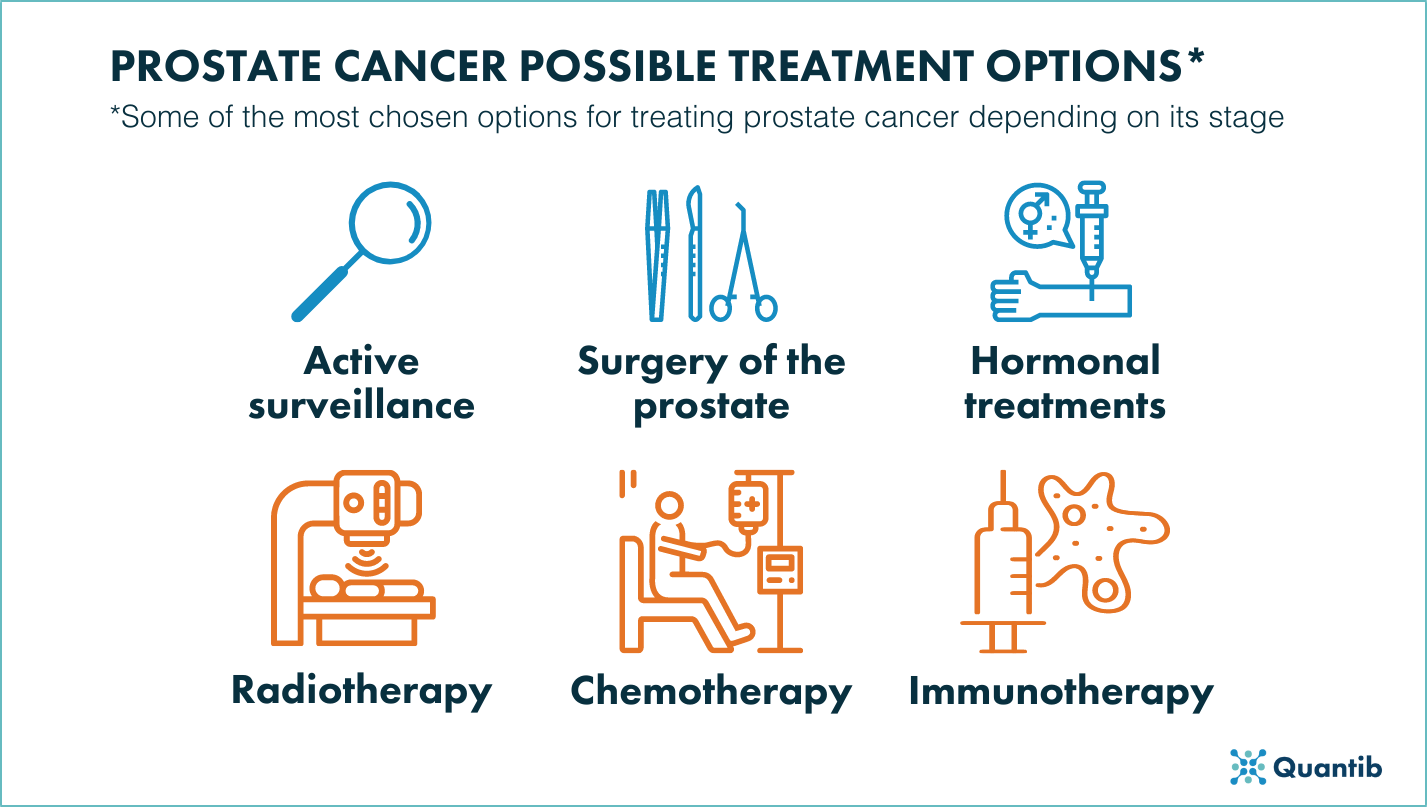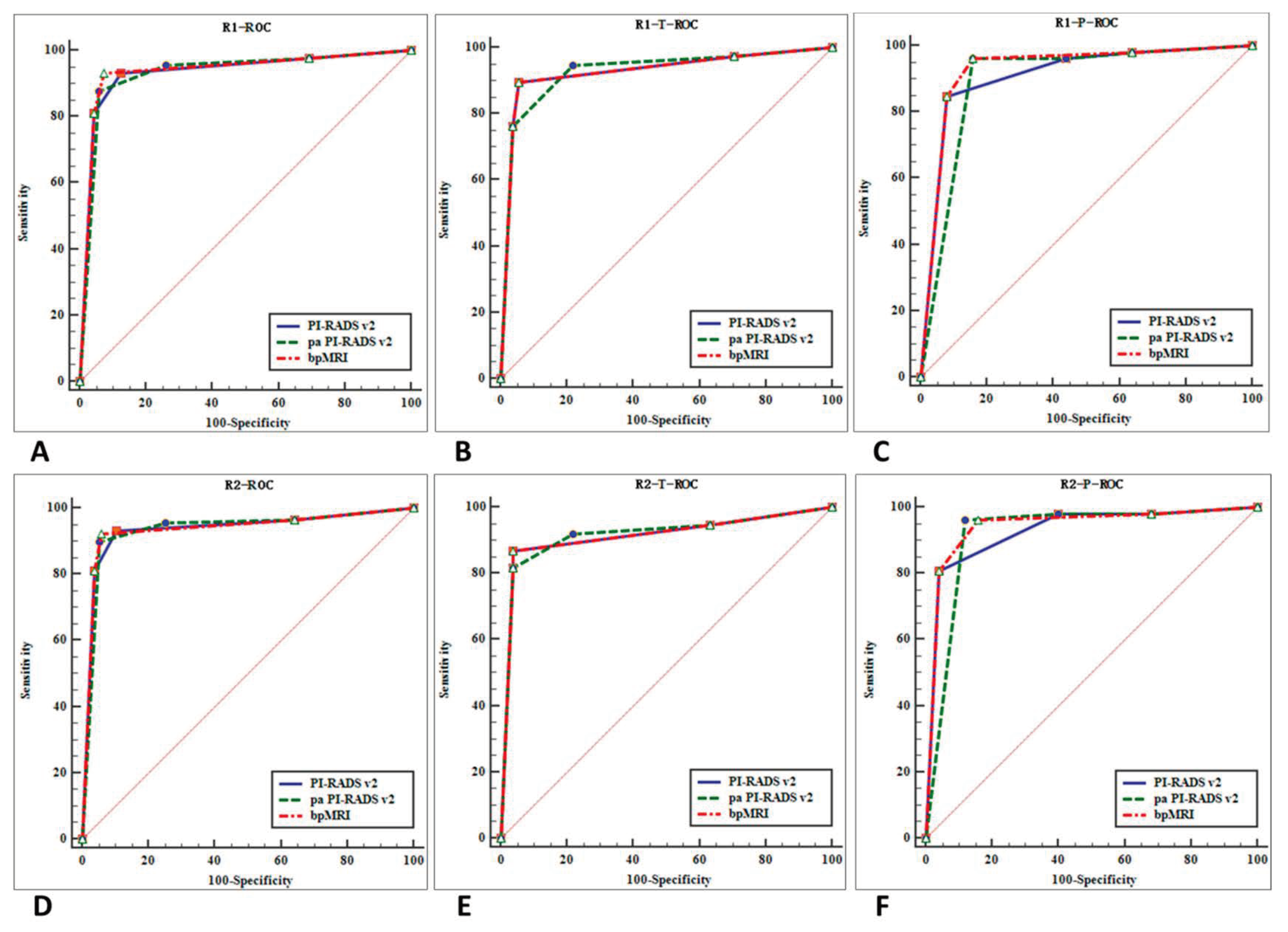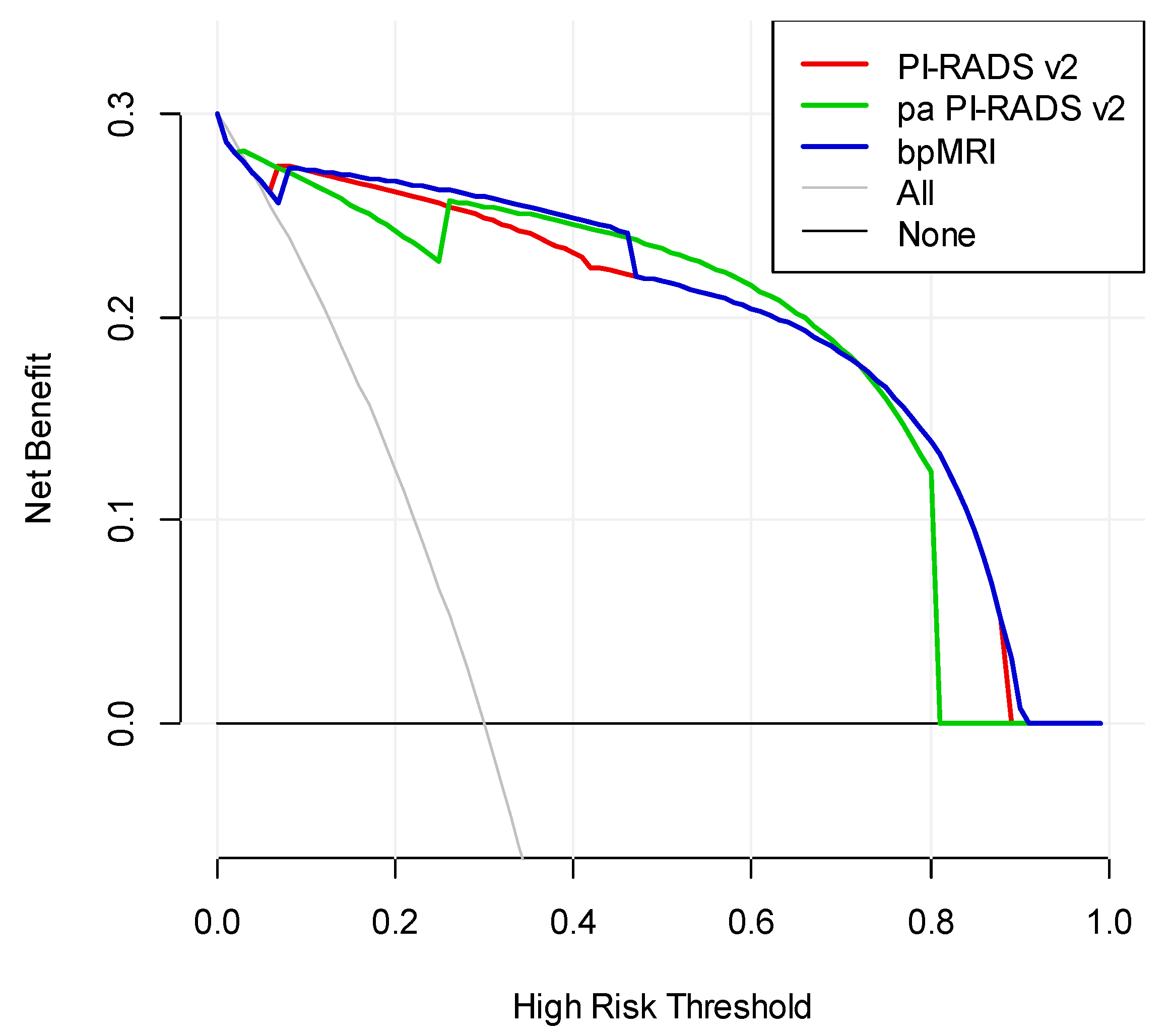A PI-RADS score of 4 or more is also now a trigger for definitive treatment for prostate cancer. Active Surveillance is not suitable in intermediate-risk disease It is now accepted that AS programs are safe in low-risk prostate cancers with prostate-cancer specific survival of 981 and 943 at 10 and 15-year follow up respectively 3.

Pdf Reporting Magnetic Resonance Imaging In Men On Active Surveillance For Prostate Cancer The Precise Recommendations A Report Of A European School Of Oncology Task Force Semantic Scholar
PI-RADS 4 - Example.

. Grade Group GG Designed by radiologists to help radiologic readers identify significant PCa on mpMRI. However in general biopsy should be considered for PI-RADS 4 or 5 lesions but not PI-RADS 1 or 2 lesions. When the followed-up lesion develops.
A PI-RADS score of 4 or more is also now a trigger for definitive treatment for prostate cancer. My Urologist is vert concerned about the rising PSA. Purpose To compare the effectiveness and cost-effectiveness of AS strategies for low-risk PC with versus without MRI.
See above explanation for each PI-RADS score which reports the likelihood that significant PCa is present. Researchers say the results should empower men to consider all options available to them and work with their care team to determine the best management approach. Gleason score is always shown as.
No accumulation or free fluids within the abdominalpelvis cavity. 12 27 had persistent PI-RADS 45 abnormalities 17 38 had PI-RADS 23 16 35 had PI-RADS 1. It means that if you have a Prostate Imaging Reporting and Data System score of 4 or more you are.
Designed by a pathologist who recognized 5 different patterns of PCa cells as seen under a microscope. Active Surveillance PiRads from 4 to 5. In addition to diagnosis mpMRI has increasing become a useful tool for monitoring prostate cancer risk of patients on active.
A PI-RADS score of at least 4 indicating that a clinically significant cancer is likely to be present led to 42 percent fewer biopsies over the patients lifetime. Active Surveillance PiRads from 4 to 5. The European Society of Urogenital Radiology ESUR proposed a numeric system called the Prostate Imaging Reporting and Data System or PI-RADS for prostate cancer detection.
Active Surveillance no more. It is based in an earlier system for breast imaging. Presence of PI-RADS 4 or 5 lesions on men enrolled to AS programs for prostate cancer warrants concern.
Diagnosed April 2018 On AS -- Recently PSA went from 898 to 938 10 months and 3tMRI showed no change in lesion size but PiRads went from 4 to 5. Also most clinicians will perform MRI-guided biopsy of PI-RADS 45 lesions in active surveillance patients prior to proceeding with treatment. In PI-RADS 4-5 non-biopsy-naive group sensitivity was 828 specificity 806 PPV 80 and NPV 833.
Additionally if the imaging features of PI-RADS 4 and 5 lesions on TRUS are known detection of a lesion will be easier in fusion or cognitive biopsies. This TRUS procedure distorts not only the prostate gland but also the PI-RADS 4 or 5 lesions and hampers MRITRUS imaging or lesion detection in cognitive biopsies. Patient in active surveillance for prostate cancer with very high probability of clinically significant cancer PI-RADS 5.
The introduction of multiparametric Magnetic Resonance Imaging mpMRI has improved the diagnosis and risk stratification of intermediate and high-risk prostate cancer. Each lesion can be scored 1-5 on DWI and on T2W as well as by the absence or presence of dynamic contrast enhancement. 21 According to their data AUC.
A powerful 3 Tesla 3T magnet is the hardware for capturing prostate images. The medical records of the patients who had undergone mpMRI before radical prostatectomy from 2014 to. PCRIs Alex asks questions from our helpline and YouTube comments on the topics of PI-RADS Gleason 347 when the percentage of 4 is less than 10 and acti.
This 64-year-old male presents with increasing prostate-specific antigen PSA from 507 to 900 in seven months. PI-RADS is an acronym and it stands for prostate imaging reporting and data system but what it really is is a highly structured method for reporting what can be seen on certain types of prostate-specific magnetic resonance imaging MRI scan and how to interpret these data. Can watch low grade tumors over time to observe if they grow or become more advanced based on size shape DCE MRI and.
A PI-RADS 4 or 5 is equivalent to a Gleason 7 or more. When follow-up is recommended it is termed active surveillance or watchful waiting continuous imaging and biopsies depending on the medical recommendation. PI-RADS 3 is equivocal for some lesions the radiologist will recommend either follow-up or biopsy.
PI-RADS 4 and 5 lesions are being increasing correlated with intermediate and high-grade prostate cancer. PI-RADS 4 and 5 mandate biopsy as they infer a high risk of cancer. PI-RADS 4 or more.
On the other hand regarding the diagnosis of PI-RADS 3 lesions an active surveillance. 2127 The authors showed that the absence of a PI-RADS 4 or 5 lesion had a negative predictive value of 96 for the absence of PCa up staging at surgery defined as pathological staging pT3a or greater. We investigated the utility of multiparametric magnetic resonance imaging mpMRI using Prostate Imaging Reporting and Data System version 2 PI-RADSv2 scoring in patients with prostate cancer eligible for active surveillance AS.
Almeida et al reported on 73 patients with low risk PCa defined by the Prostate Cancer Research International. Understanding the PI-RADS system in detail is complicated. On followup 45 men underwent repeat magnetic resonance imaging.
A PI-RADS score 4 were associated with a three-fold increase in the odds of. Of 497 men 88 18 with PI-RADS 45 abnormality prior to initial biopsy had no cancer on magnetic resonance imaging targeted prostate biopsy. I have Gleason 34 in one spot with a Decipher test indicating a 35 chance of metastasis in 5 yrs.
Patients were grouped into 1 of 4 cohorts-cohort 1 a PI-RADS 4 index lesion and an additional PI-RADS 2 or 3 lesion. Most of the current active surveillance criteria published in the literature were based on. Surveillance varies in MRI frequency of follow-up and the Prostate Imaging Reporting and Data System PI-RADS score that would repeat biopsy.
The contribution of these scores to the overall PI-RADS assessment differs depending on. Background Active surveillance AS is the recommended treatment option for low-risk prostate cancer PC. The PI-RADS 4-5 in the PZ were benign in 46 of cases.
Thirteen patients were on active surveillance for low volume Gleason 6 10 and low volume Gleason 7 3 disease. The contribution of these scores to the overall PI-RADS assessment differs depending on. In case the urologist decides for a percutaneous biopsy it is recommended to obtain additional fragments for the above describe areas.
As recently discussed in. Leads to less frequent biopsies and unnecessary prostatectomies. First a word about 3T mpMRI.

Current Oncology Free Full Text Diagnostic Performance Of Pi Rads V2 Proposed Adjusted Pi Rads V2 And Biparametric Magnetic Resonance Imaging For Prostate Cancer Detection A Preliminary Study Html

How Can Urologists Improve Patient Care In The Prostate Cancer Pathway

Current Oncology Free Full Text Diagnostic Performance Of Pi Rads V2 Proposed Adjusted Pi Rads V2 And Biparametric Magnetic Resonance Imaging For Prostate Cancer Detection A Preliminary Study Html

Management Of Men With Pi Rads 4 5 Lesions And Negative Biopsy

Current Oncology Free Full Text Diagnostic Performance Of Pi Rads V2 Proposed Adjusted Pi Rads V2 And Biparametric Magnetic Resonance Imaging For Prostate Cancer Detection A Preliminary Study Html

Pi Rads V2 Assessment Categories Download Table

Scielo Brasil Is Possible To Rule Out Clinically Significant Prostate Cancer Using Pi Rads V2 For The Assessment Of Prostate Mri Is Possible To Rule Out Clinically Significant Prostate Cancer Using

Pdf Reporting Magnetic Resonance Imaging In Men On Active Surveillance For Prostate Cancer The Precise Recommendations A Report Of A European School Of Oncology Task Force Semantic Scholar
0 comments
Post a Comment